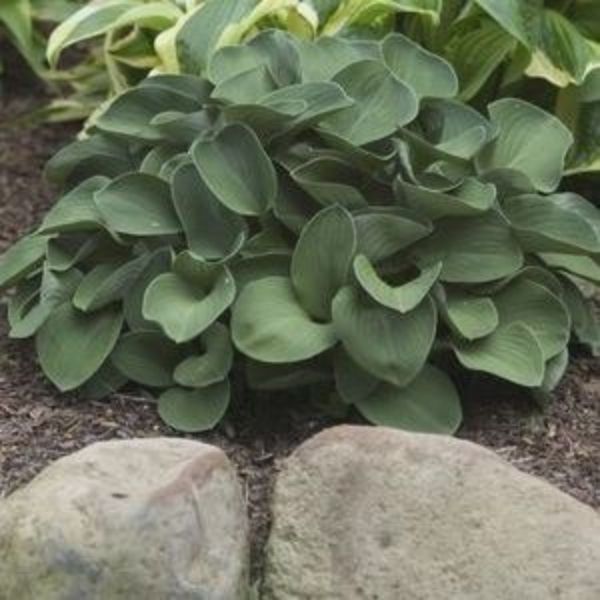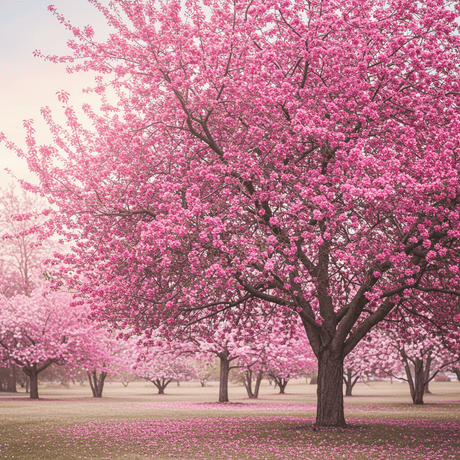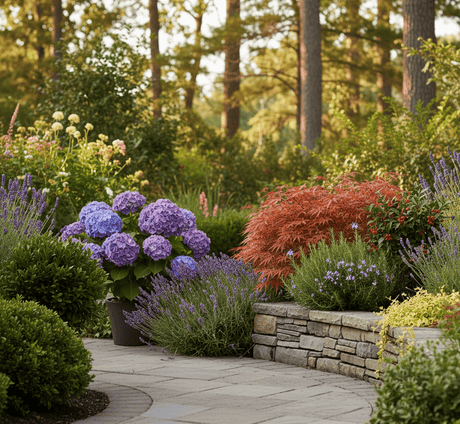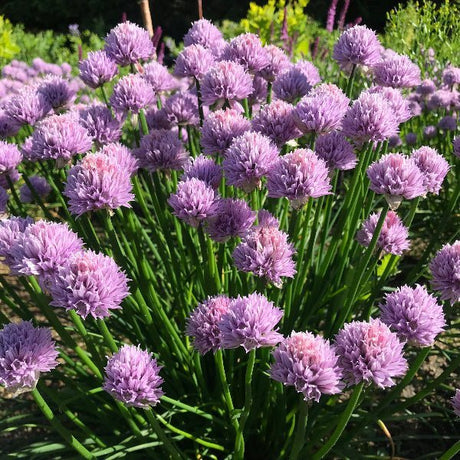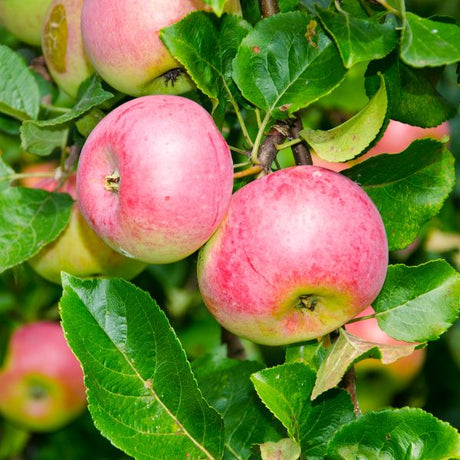Blue Mouse Ears Hosta
Hosta 'Blue Mouse Ears'
- Stay Protected with Plant Sentry ™
Blue Mouse Ears Hosta - #1 Container is backordered and will ship as soon as it is back in stock.
Plant Sentry™
Plant Sentry™

Plant Sentry™ Protected
Your order is protected by our compliance system that:
- Prevents restricted plants from shipping to your state
- Ensures plants meet your state's agricultural requirements
- Protects gardens from invasive pests and diseases
Delivery and Shipping
Delivery and Shipping
Delivery and Shipping
Fast, Safe Plant Delivery
Ships in 3-4 business days • Tracking provided • Weather protected
| Under $50 | $9.99 |
| $50 - $99.99 | $14.99 |
| $100 - $149.99 | $16.99 |
| $150 - $198.99 | $24.99 |
| $199+ | FREE |
✓ Zone-specific timing • ✓ Professional packaging • ✓ Health guarantee
Understanding Plant Options
Nature Hills offers plants in two main formats:
- Container Plants: Grown in pots with soil, sized by container volume and plant age
- Bare Root Plants: Dormant plants without soil, sized by height measurements
Container Plant Sizes
Container sizes indicate plant age and growing capacity rather than liquid volume equivalents. Our containers follow industry-standard nursery "trade gallon" specifications, which differ from standard liquid gallon measurements.
Young Plants (6 months to 18 months old)
| Container Size | Actual Volume | Metric Equivalent |
|---|---|---|
| 2" x 2" x 3" | 0.18 - 0.21 dry quarts | 0.20 - 0.23 dry liters |
| 4" Container | 0.31 - 0.87 dry quarts | 0.35 - 0.96 dry liters |
| 4.5" Container | 0.65 dry quarts | 0.72 dry liters |
| 6" Container | 1.4 dry quarts | 1.59 dry liters |
| 1 Quart | 1 dry quart | 1.1 dry liters |
| 5.5" Container | 1.89 dry quarts | 2.08 dry liters |
Established Plants (18 months to 2.5 years old)
| Container Size | Actual Volume | Metric Equivalent |
|---|---|---|
| 2 Quart | 2 dry quarts | 2.2 dry liters |
| #1 Container | 2.26 - 3.73 dry quarts | 2.49 - 4.11 dry liters |
| 5" x 5" x 12" | 3.5 - 4.3 dry quarts | 3.85 - 4.74 dry liters |
Mature Plants (2-4 years old)
| Container Size | Actual Volume | Metric Equivalent |
|---|---|---|
| #2 Container | 1.19 - 1.76 dry gallons | 5.24 - 7.75 dry liters |
| #3 Container | 2.15 - 2.76 dry gallons | 8.14 - 12.16 dry liters |
Large Plants (3-5 years old)
| Container Size | Actual Volume | Metric Equivalent |
|---|---|---|
| #5 Container | 2.92 - 4.62 dry gallons | 12.86 - 20.35 dry liters |
| #6 Container | 5.25 - 6.01 dry gallons | 23.12 - 26.42 dry liters |
| #7 Container | 5.98 - 6.53 dry gallons | 26.34 - 28.76 dry liters |
Bare Root Plants
Bare root plants are sold by height from the root system to the top of the plant. Plants may exceed minimum height requirements.
Common Sizes:
- Trees: 1 foot, 2 feet, 3 feet, 4 feet, 5 feet, 6 feet
- Shrubs & Perennials: 1 foot, 18 inches, 2 feet
Important Notes
Container Volume Specifications
- Trade Gallon Standard: Our containers follow industry-standard "trade gallon" specifications established by the American National Standards Institute (ANSI Z60.1) for nursery stock
- Volume Variations: Actual soil volume may vary due to plant root systems and growing medium settlement
- Age Indicators: Container size primarily indicates plant age and maturity rather than liquid volume equivalents
Growing Conditions
- Plant size can vary based on variety and growing conditions
- Container size helps indicate plant maturity and establishment level
- Larger containers generally mean more established root systems and faster landscape establishment
Seasonal Availability
- Bare root plants are available seasonally when dormant
- Container plants are available throughout the growing season
- Specific varieties may have limited availability in certain sizes
Questions?
For questions about specific plant sizes or availability, please contact our plant experts who can help you choose the right size for your landscape needs.
Plant Highlights
Blue Mouse Ears Hosta highlights at a glance!
-
Botanical Name
-
Brand
-
Growing Zones3, 4, 5, 6, 7, 8
-
Growth RateModerate
-
Mature Height
-
Mature Width
-
Leaf Color
-
Flower Color
-
Pollinator FriendlyYes
-
Pollinator Required
-
Bloom PeriodEarly Spring, Late Spring
-
Does Not Ship To
Characteristics
Where To Plant
When To Prune
- Late Fall
Water & Moisture Needs
- Moderate
Sunlight Needs
Soil Needs
- Well Drained
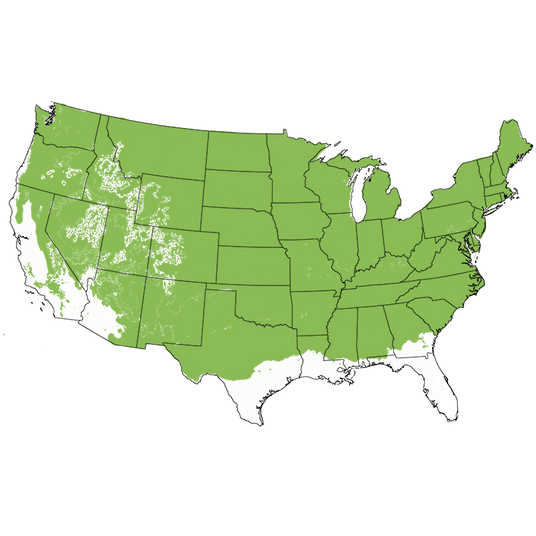
Growing Zones
Hostas are always welcomed additions to the home, but few exhibit the charm and coloring of Blue Mouse Ears Hosta (Hosta 'Blue Mouse Ears'). This dwarf variety features thick, leathery leaves with the slightest, adorable curl. The petite leaves call to mind cute, little mouse ears (thus the name).
Blue mouse Ears' foliage is an endearing shade of blue-green that attracts the eye throughout the season and this petite Hosta even provides the added benefit of mid-summer flowers. Your Blue Mouse Ears Hosta is a herbaceous perennial that will grow in a tidy compact habit with densely growing clumps.
Dainty bells of lavender decorate the stems that rise up to one foot above the foliage in July, a visual treat as well as a welcome boon for Pollinators. If you're lucky, you might even see a curious Hummingbird checking out the scene. Don't mistake its small size for vulnerability though as this little gem has a hardy, easy-care nature. Cold and heat-tolerant throughout USDA growing zones 3 to 8 and forms a 6-8 inch tall mound that's about 12 inches wide.
Planting and Application:
Plant the low-growing little Blue Mouse Ears in your Rock Garden or scatter a few amid the nooks and crannies in your landscape that could still use a decorative touch! Or add them as an accent in your flower beds under the canopy of your backyard shade trees. Cottage gardens, shady Perennial borders gain cute little leaves, and of course, Mouse Ears look fantastic as a member of your very own Hosta garden!
Use these darling little foliage plants throughout shade gardens and beneath the shade of shrubs as facer plants and adorable skirting! Plant in large planters and containers beneath covered seating areas, porches, and balconies to keep Mouse Ears close by! Darling edging along the garden and pathway edges as pretty finishing touches!
- Curled Blue-Green Little Leaves
- Lavender Bell-Shaped Blooms on Short Scapes
- Pollinator Friendly & Hummingbird Nectar
- Dwarf Hosta Forms Dense Short Mounds
- Edging, Containers, Specimens & Unique Texture
#ProPlantTips for Care:
These Hosta are low-care and highly adaptive to a variety of soils and does best in full to part shade and full shade in hotter climates since too much sun will burn the leaves. These perennials grow best in moist, well-drained, highly organic soils with a pH between 5.5 and 7.5. Sandy loam is better than clay because it provides more aeration for the roots. Keep areas around Hostas clear of excess leaf debris to reduce the presence of slugs and snails. They do best with a 3-4 inch thick layer of mulch chips to help hold in moisture. Deadhead as soon as the blooms fade, and prune back the foliage once it dies back in the fall. They appreciate being divided every 3-5 years.
- Best in Full Shade in Hot Climates & Part Sun/Shade In All
- Moderate Consistent Moisture
- Enriched Well-Drained Soils
- Prune In Late Fall
- Very Easy to Grow & Cold/Heat-Tolerant
It's easy to see why Blue Mouse Ears Hosta once won "Hosta of the Year". It simply doesn't get more loveable than a Hosta that reminds people of mouse ears! Terrific color, a size that fits almost anywhere and an adaptive nature make this a must-have. Order yours today at Nature Hills to finish your seasonal gardening projects!
Frequently Asked Questions
Do Hostas need full sun or shade?
Hosta does best in full sun in cooler climates but does appreciate afternoon protection from the worst of the summer sun, especially in the hottest of their growing zone range. In the hottest climates, Hosta like partial shade or dappled shade, and some varieties will do great in full shade.
Where do Hostas grow best?
Hosta plants love enriched, well-drained soil that is moderately yet consistently moist throughout the growing season. They appreciate mulched garden beds.
Do Hostas come back every year? Are Hostas a perennial plant?
With vigorous carefree growth, Hostas are herbaceous perennial plants that will return year after year with little maintenance.
What do you do with Hostas in the fall? What do you do with Hostas in the winter?
Hosta leaves will die back after frost but the crowns and roots remain intact and dormant until next spring. Prune back the leaves once they turn brown in the autumn and remove them from the plant's area. For winter protection, add a layer of compost or mulch over the crowns to protect them from the chill.
Do Hosta attract hummingbirds or pollinators?
Hostas are loved by pollinators and hummingbirds! All walks of beneficial pollinators will show up to sip their nectar.
What Shipping Options Do You Offer?
NatureHills.com works closely with our growers and nursery professionals to ensure we ship when it is most appropriate for your area. Our goal is to deliver the hardiest plants by avoiding extreme high and low temperatures. Check out our shipping schedule for more information and to learn our wills and don'ts when it comes to shipping plants. Find your Hosta Plants for sale here at NatureHills.com!



